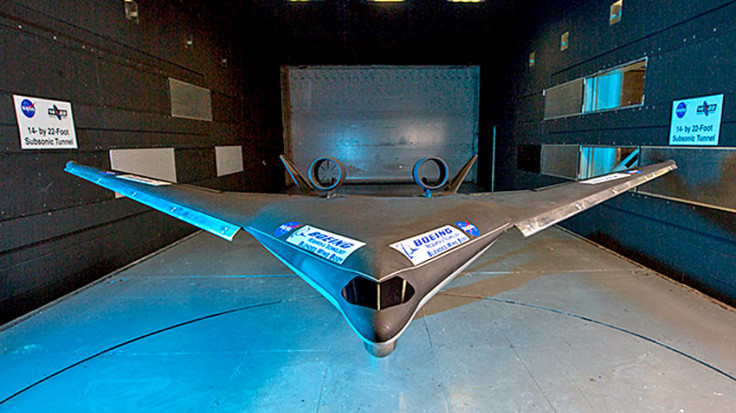Boeing and Nasa testing subsonic Blended Wing Body to make planes super-efficient
After 20 years of research, Boeing and Nasa are getting closer and want to use the approach for X-Planes.

Aerospace manufacturer Boeing and Nasa are currently testing a plane model featuring an advanced concept called Blended Wing Body (BWB), in the hopes of being able to make conventional subsonic aircraft much more efficient within the next 10 years.
The BWB concept is revolutionary because it features a triangular tailless design – similar to a stingray, that smoothly merges the plane's wings into its body – which is a huge departure from the conventional tube and wing design that commercial airliners use today.
Aerospace engineers have been theorising about fixed-wing BWB planes since the 1990s, because the shape of the plane should enable it to be ultra-efficient in the air because it can generate a greater amount of "lift", which is the force a plane generates as it moves through the air, perpendicular to the oncoming air flow direction.
In theory, a BWB plane should have a much greater lift-to-drag ratio than a conventional aircraft, and lift reduces the size and drag of the wings, which reduces the amount of fuel needed to propel the plane forwards.
Boeing wants to use BWB to build super-efficient subsonic planes that would initially be used by the military and for refuelling other aircraft in mid-air, and to this end has been experimenting since 1997 with various iterations of a full-scale unmanned aerial vehicle (UAV) called Boeing X-48 that features BWB characteristics.
The latest tests by Boeing and Nasa at the Nasa Langley Research Center use a BWB aircraft model that is only 6% scale with a 13ft wingspan, as the researchers are trying to prove how well the BWB concept works by testing the model in a 14 by 22ft subsonic wind tunnel with a technique called particle imagery velocimetry (PIV), whereby the researchers map airflow over the aeroplane using lasers and smoke.
Eventually, Nasa and Boeing want to create a manned prototype aircraft and they think the technology can be commercialised by 2030 to be used by the US Air Force.
"We believe our body of work, both in design, test and engineering, is technically superior when compared to other designs in the marketplace," said Boeing's vice president for aeromechanics technology Naveed Hussain.
"The BWB is showing great potential to offer structural, aerodynamic and operating efficiencies as well as the capability to be more fuel efficient and quieter over more traditional aircraft designs."
© Copyright IBTimes 2025. All rights reserved.






















